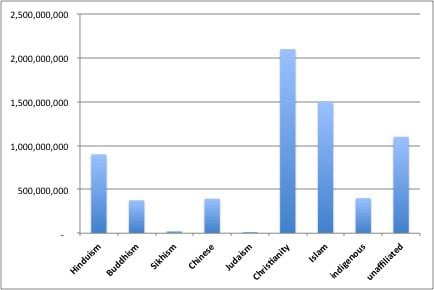As I write, Hindus in India and beyond are preparing for the beginning of Navratri (or Navaratri, Sanskrit for “Nine Nights”), a major Hindu harvest-time religious festival.
As its name implies, Navratri is a celebration running nine nights in a row. Hinduism’s lunar calendar means that that the precise dates of the nine nights in question drift somewhat from year to year, relative to the Western (Gregorian) calendar. This year, Navratri will begin on October 16, with its ninth and final night falling upon October 24.
Over the course of these nine nights, the Divine is worshipped in nine different forms — nine different female forms, or goddesses.
Hinduism recognizes multiple forms or manifestations of God. Some Hindus worship God primarily in the form of Vishnu. Other Hindus instead worship God in the form of Shiva. Still other Hindus worship God as Goddess (Devi), as the Divine Feminine.
In keeping with Hinduism’s characteristic multiplicity and diversity, there are also many forms or manifestation of the Mother Goddess. Some devotees worship the Divine Feminine as the serene warrior goddess Durga, while others are devotees of the fearsome goddess Kali.
Even Vaishnavites (worshippers of Vishnu) and Shaivites (worshippers of Shiva) also recognize the important feminine aspects of Deity. Gods in Hinduism are frequently are accompanied by wives or consorts, referred to as shaktis. These shaktis are regarded as being the essential creative powers or enabling dynamic forces that actually empower and drive the Divine; without the creative energies of their respective shaktis, the gods would be inert and inactive. The shakti or female consort of Vishnu is Lakshmi, goddess of wealth, prosperity, luck, and beauty. Shiva, on the other hand, has as his shakti his wife Parvati, goddess of power and mother of the popular elephant-headed god Ganesha.
Each of the nine nights of Navratri celebrates one of nine such variant forms or aspects of the Great Goddess (Devi/Shakti). The first three days are dedicated to worshipping Durga (in her varied manifestations — as Kali, as Parvati, as Kumari); the next three days, to Lakshmi; the third three days, to Saraswati, goddess of wisdom. Fasting, feasting, dancing, and prayers characterize the activities of Navratri, as it celebrates the motherhood of God.

